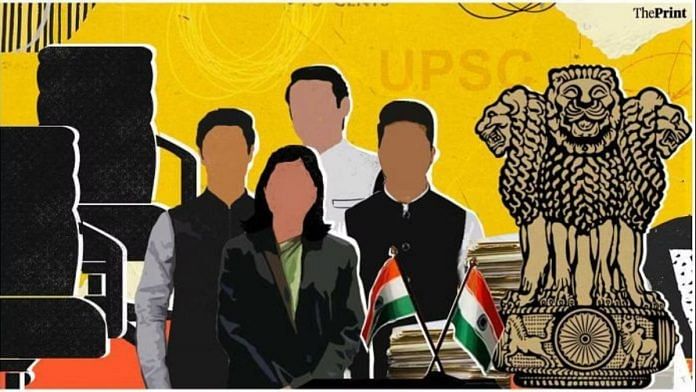Thank you dear subscribers, we are overwhelmed with your response.
Your Turn is a unique section from ThePrint featuring points of view from its subscribers. If you are a subscriber, have a point of view, please send it to us. If not, do subscribe here: https://theprint.in/subscribe/
Sardar Patel, the “Iron Man of India”, called the civil services ‘the steel frame’ of our country. This carefully crafted bureaucratic structure was intended to help consolidate India by aiding its socio-economic development and ensuring continuity of administration in the face of political change.
To this day, even with enormously increased avenues in the private sector, the civil services continue to attract the brightest minds of our country. As American economist Lant Pritchett of the Harvard University once stated, “the civil service in India is full of officers that undergo an application process which makes getting into Harvard look like a walk in the park.” A remarkable statistic to consider here is that a whopping 13.4 lakh candidates applied for the UPSC Civil Services Examination for a mere 1,056 vacancies.
Yet, despite its exceptional talent and merit-based selection process, many experts are questioning whether this apparatus, set in place after independence is still relevant. The bureaucracy has been held responsible for many of the ills plaguing the country. Inefficiency, unresponsiveness, corruption, and partisanship, these are all charges levelled against the bureaucracy in recent times.
This affliction of the bureaucracy even compelled the Hon’ble Prime Minister to question the power centre created in our country by handing over everything to the institution. By doffing his hat to the private sector for its contribution to growth and development of the country, Mr. Modi, in 2021, remarked in Parliament, “ Sab kuch babu hi karenge. IAS ban gaye matlab vo fertiliser ka kaarkhaana bhi chalayega, chemical ka kaarkhaana bhi chalayega, IAS ho gaya to woh hawai jahaz bhi chalayega. Yeh kaunsi badi taakat bana kar rakh di hai humne? Babuon ke hath me desh de karke hum kya karne vale hain?
(Babus will do everything. By virtue of becoming IAS officers, they’ll operate fertiliser and chemical factories, and even fly aeroplanes. What kind of power have we created? What are we going to accomplish by handing over the entire country in the hands of bureaucrats?)
Out of the several factors responsible for the rusting of India’s steel frame, two stand out: political interference and a lack of specialisation or domain expertise.
Lack of autonomy on account of constant political interference turns out to be a major handicap for civil servants as it demoralises hardworking and honest officers. At the same time, endless transfers, often within months, from one department to another prevent civil servants from acquiring any domain expertise.
The result is an infructuous system that moves at glacial-speed, completely oblivious to the sweeping changes happening around it.
There is a growing consensus in political and civic circles that if India is to sustain its high growth and developmental story and become a developed nation by 2047, a comprehensive remoulding of the steel frame is needed- and fast.
As remarked by the former Reserve Bank of India (RBI) Governor Duvvuri Subbarao, “the steel frame has certainly rusted. However, the solution is not to throw away the rusted frame but to bring it back to its original lustre.”
Until such a remould happens, no amount of change at the top will sustain.
These pieces are being published as they have been received – they have not been edited/fact-checked by ThePrint


